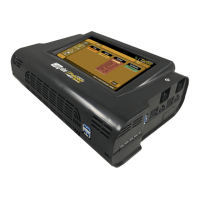IMAGING
Logicube Falcon
®
-Neo User’s Manual 43
Start the wipe task. The task should finish quickly as it is just wiping the
HPA/DCO/ACS3 and 1 LBA. When the wipe task finishes, the drive should
be back to its original capacity.
4.3.3 Error Handling
Error Handling is available in the following modes: Drive to File, Partition to File, and
Drive to Drive.
In Drive to Drive mode, when bad sectors are encountered on the Source drive, Falcon-
NEO can either skip the bad sectors or abort the imaging operation. This allows flexibility
on what to do when bad sectors are found on the Source drive.
When bad sectors are encountered, and error handling is set
to Skip, Falcon-NEO will write a zero on the corresponding
sector or position in the Destination drive or file.
In Drive to File and Partition to File, Falcon-NEO also has a setting for Error
Granularity and Reverse Read:
4.3.3.1 Error Granularity
In Drive to File and Partition to File bad sectors are skipped. Changing
the granularity allows more sectors to be skipped. The following options
are available:
1 sector (512 Bytes)
4096 Bytes (8 sectors)
64 KIB (128 sectors)
A cluster size represents the smallest amount of disk space that can be
used to hold a file. The most common cluster size for an NTFS volume,
for example, is 4KB (4096 Bytes). This means that the smallest amount of
space that will be used for a file is 4096 Bytes.
As an example, if 4096 Bytes is chosen, and one of the 8 sectors in that
cluster size contains a bad sector, the Falcon-NEO will skip the entire
cluster (or 4096 bytes or 8 sectors).
4.3.3.2 Reverse Read
Reverse Read is available in Drive to File, Partition to File, and Drive to
Drive. When this is set to YES and the Falcon encounters a bad sector, it
This will instruct the Falcon-NEO will skip past the block (based on the

